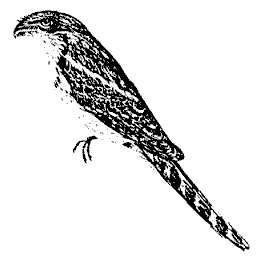 |
Science Frontiers ONLINE No. 92: Mar-Apr 1994 |
|
|
Flies fly into frogmouth's mouth
 Papuan frogmouth after just catching a fly |
J. Diamond, who wrote about this "living flytrap" in the February issue of Natural History, wondered about the evolutionary rationale here:
"My first thought was, nonsense! If so, frogmouths would have achieved every species' evolutionary dream -- getting food without work or cost. Then I reflected that there was indeed a cost, that of synthesizing the sticky chemical bait. On the other hand, a raven-sized bird would have to attract a lot of flying insects before its strategy of setting itself up as a living flytrap could rate as successful."
In the same article, Diamond introduced the reader to two other remarkable birds also found in Papua New Guinea. Both of these birds are meaty, lumbering, and easy to kill. Ideal prey, one would suppose. However, almost as they gasp their last breath, they begin to stink. Predators learn to avoid them. Natives who sometimes hunt them joke that one has to have a pot of boiling water under the tree where the bird sits so that it can fall in and begin cooking immediately!
(Diamond, Jared; "Stinking Birds and Burning Books," Natural History, 103:4, February 1994.)